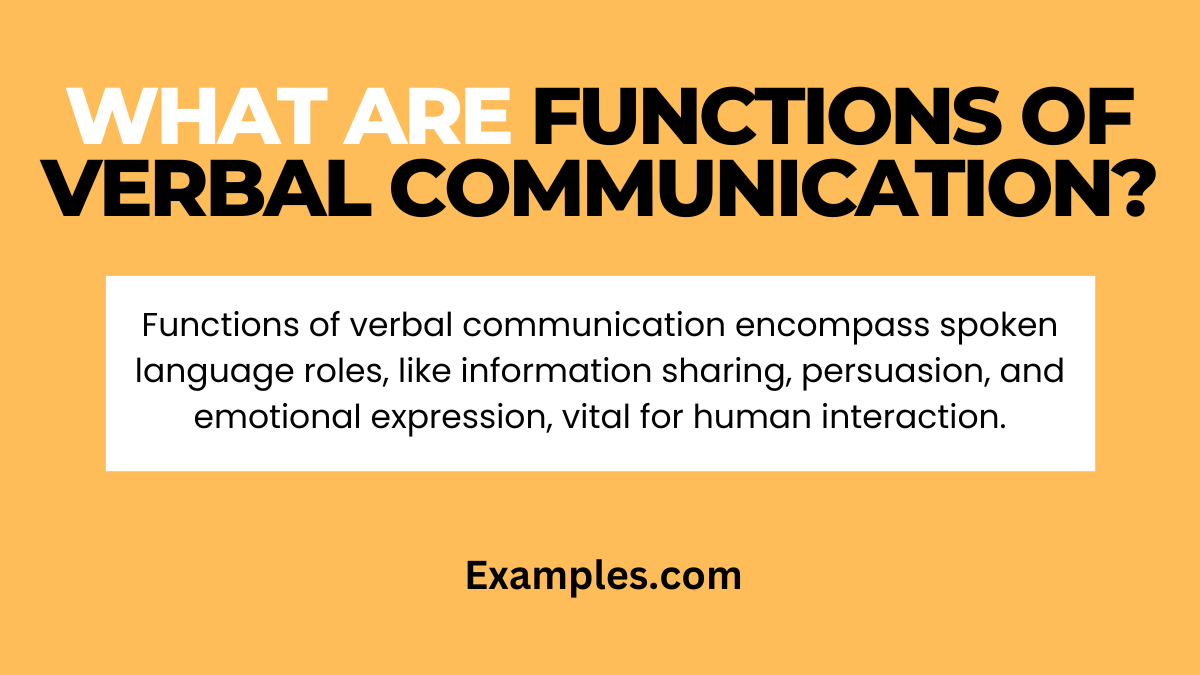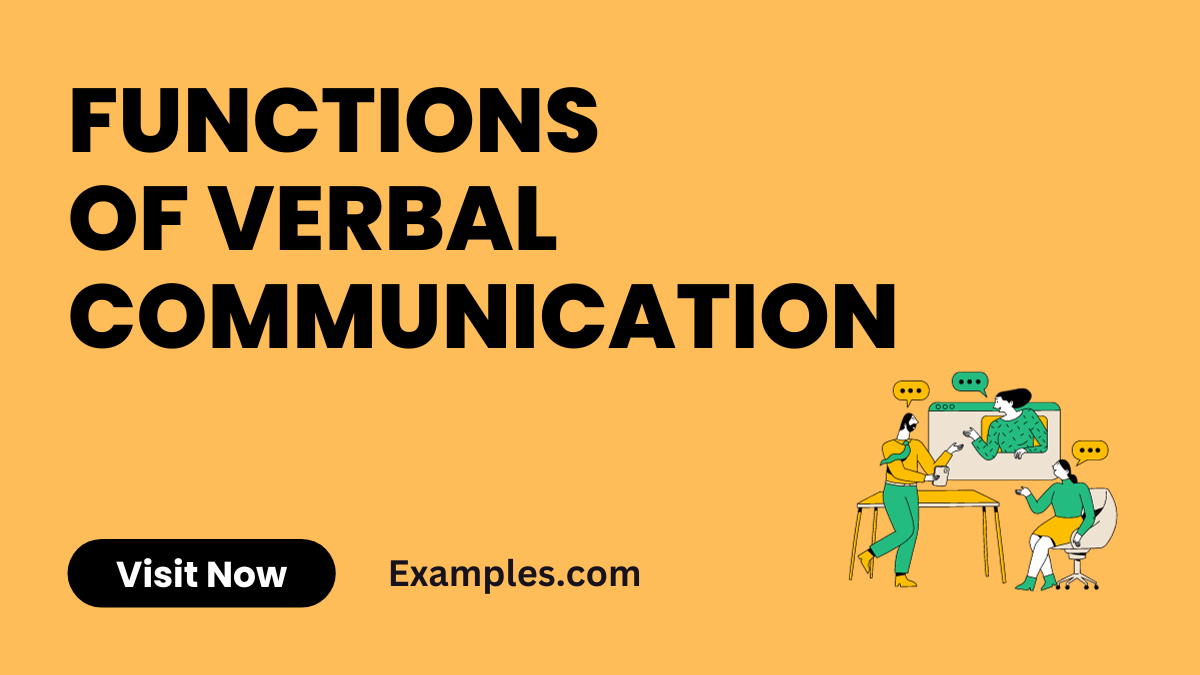Functions of Verbal Communication Examples
Dive deep into the essence of dialogue with our complete guide to the Functions of Verbal Communication, enriched with real-life Communication Examples. This guide breaks down the complex roles that spoken words play in conveying ideas, emotions, and intentions across various contexts. From personal conversations to professional discussions, understand how verbal communication operates and the strategies to enhance it, providing a foundation for more meaningful and effective exchanges.
Download Functions of Verbal Communication for Class 10 PDF
What are Functions of Verbal Communication? – Meaning

The functions of verbal communication refer to the various roles that spoken language plays in conveying messages. This encompasses sharing information, expressing feelings, persuading others, and fulfilling social needs. Each function is a crucial aspect of interaction, facilitating understanding and connection between individuals. Verbal Communication Examples include everyday conversations, business negotiations, educational teaching, and more, each utilizing verbal skills to achieve specific objectives and facilitate various forms of human connection.
What are the Primary Functions of Verbal Communication in Human Interactions?
Verbal communication serves as the lifeline of human interaction, facilitating various key functions that are essential for relationships and understanding. By understanding and enhancing Verbal Communication Skills and exploring Ways to Improve Verbal Communication Skills, individuals can navigate the Advantages and Disadvantages of Verbal Communication and utilize it effectively across various Types of Verbal Communication. Here are the primary functions:
- Information Sharing: At its core, Verbal Communication Techniques are used to exchange information, crucial in settings from Verbal Communication in Healthcare to law enforcement.
- Emotional Expression: It allows individuals to express their feelings and emotions, essential in building and maintaining personal and professional relationships.
- Instructional: In environments like Verbal Communication in the Workplace and schools, verbal communication directs actions or imparts knowledge.
- Problem-Solving: Through discussions and debates, it aids in resolving issues, a vital aspect in Verbal Communication in Business and legal settings.
- Social Interaction: Facilitates social rituals and courtesies, important in every aspect of human interaction, from casual greetings to formal negotiations.
What are the Functions of Verbal Communication in Classroom Interactions?
In educational settings, verbal communication is pivotal for a conducive learning environment. For teachers and students alike, refining Verbal Communication Skills is a continuous process that significantly impacts the educational experience. Implementing effective Verbal Communication Techniques and understanding the unique aspects of Verbal Communication for Students and those with special needs, such as Verbal Communication for Autism, are part of creating an inclusive and effective educational setting. Its functions in the classroom include:
- Instruction: Teachers use verbal communication to instruct and guide students, employing specific Verbal Communication for Teachers techniques to enhance understanding.
- Feedback: It provides a way for teachers to give students constructive feedback, crucial for learning and improvement.
- Engagement: Through questions and discussions, teachers engage students, stimulating critical thinking and participation.
- Management: Effective classroom management relies on clear verbal instructions and rules, an essential part of Verbal Communication for School environments.
- Encouragement: Words of encouragement and praise help motivate students, fostering a positive and productive classroom atmosphere.
What Functions Does Verbal Communication Fulfil in Storytelling and Narrative Forms of Expression?
In storytelling, verbal communication evokes imagination, conveys emotions, and builds a narrative structure, showcasing the Importance of Verbal Communication in cultural and personal expression.
Are there Specific Functions of Verbal Communication that are more Pronounced in Online or Digital Communication Platforms?
Digital platforms emphasize the need for clarity and brevity in verbal communication, often blending Verbal vs Written Communication rules, and necessitating continuous improvement in verbal skills.
In professional settings, what Functions does Verbal Communication Serve in Terms of Conveying Information and Instructions?
In professional environments, verbal communication facilitates clear instruction, immediate feedback, and efficient decision-making, underscoring Why you need Verbal Communication Skills for career success.
In conclusion, understanding the functions of verbal communication is essential in honing effective Communication Skills and adhering to Communication Principles. By recognizing its examples, effects, and signs, individuals can address and fix communication barriers, leading to more meaningful interactions and successful conveyance of messages in various personal and professional contexts.



